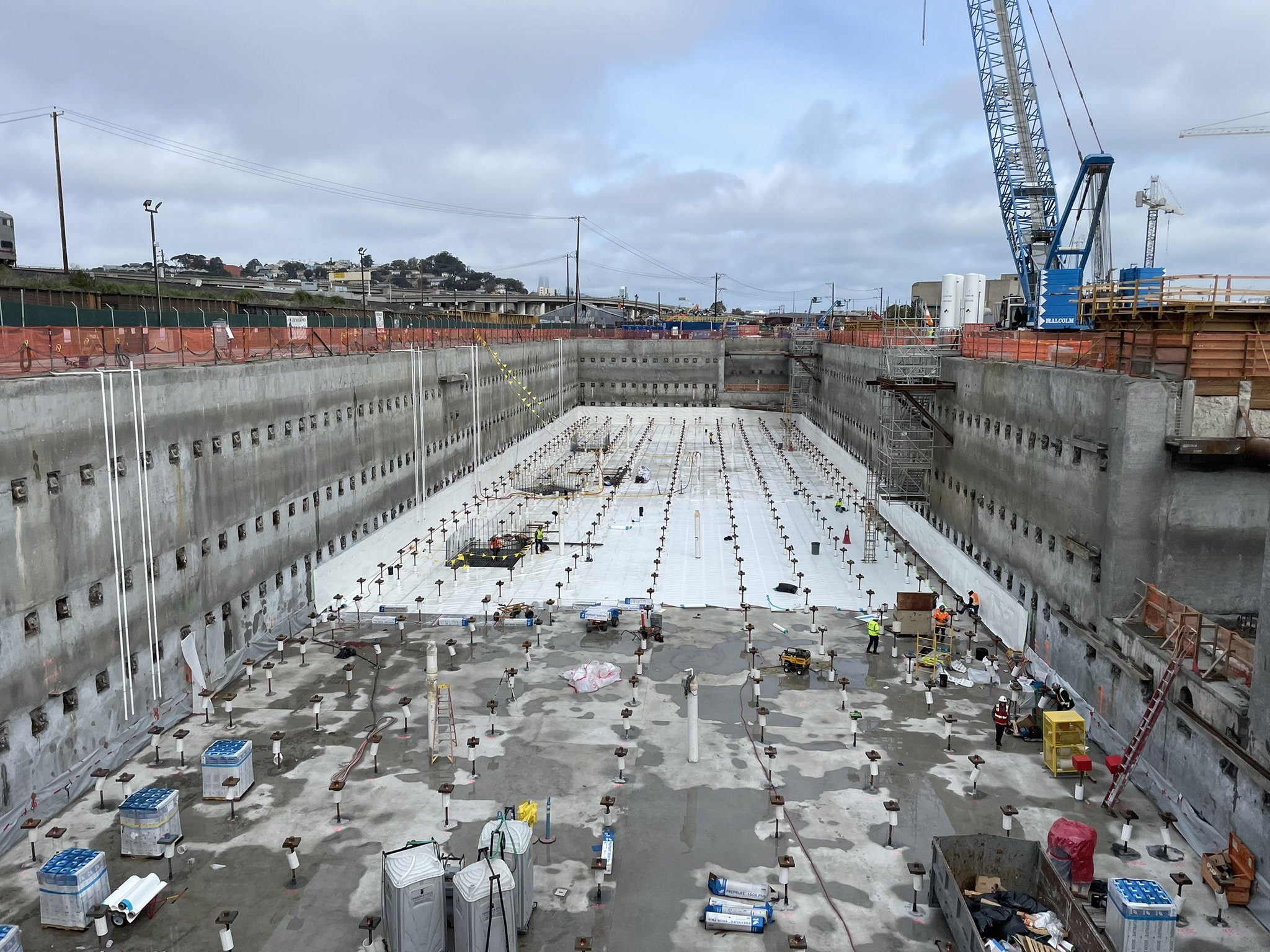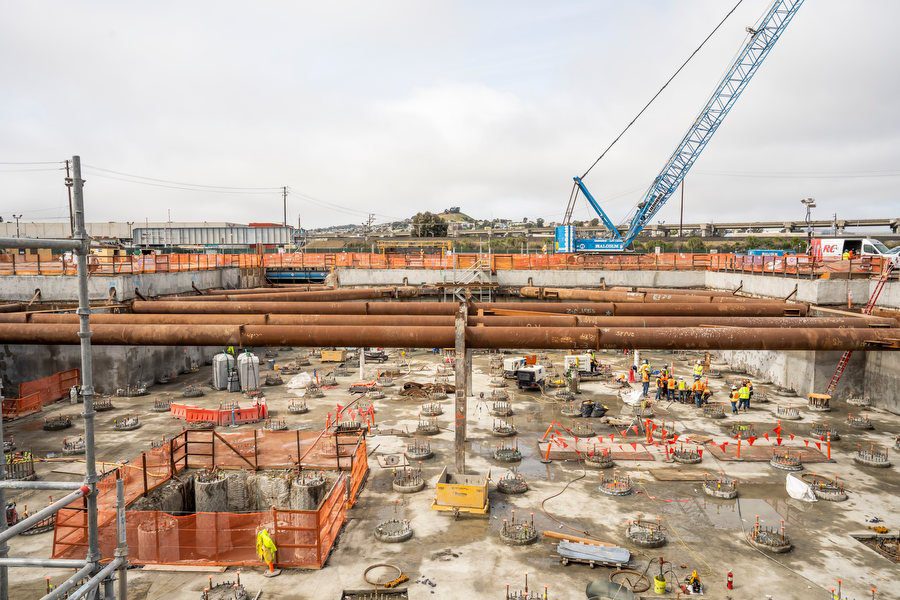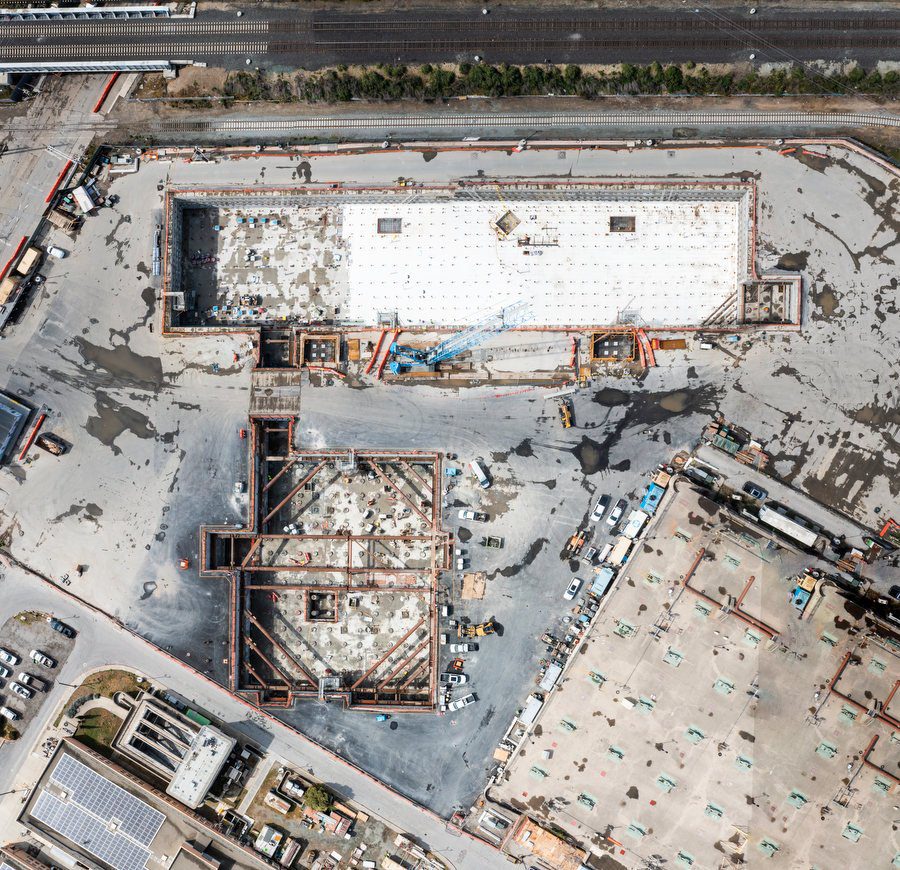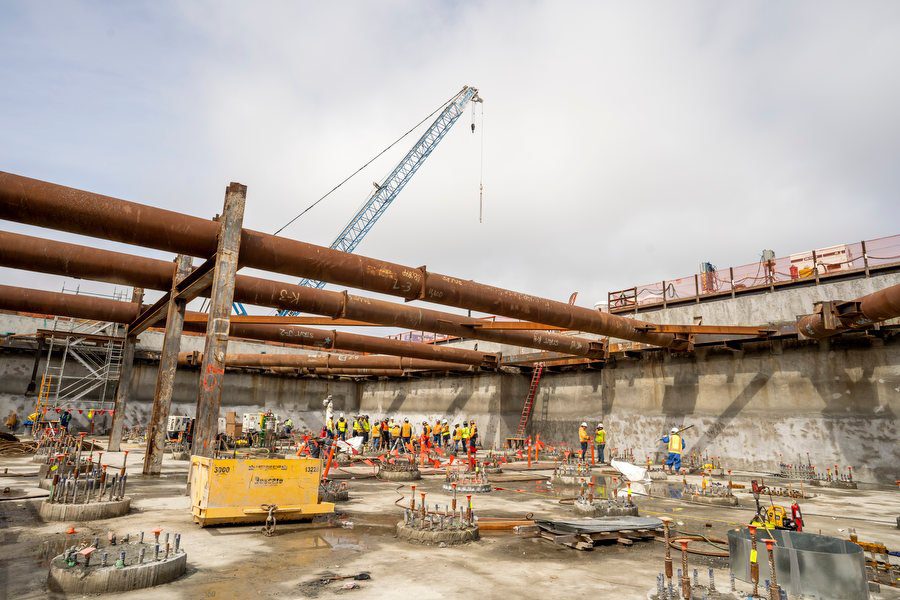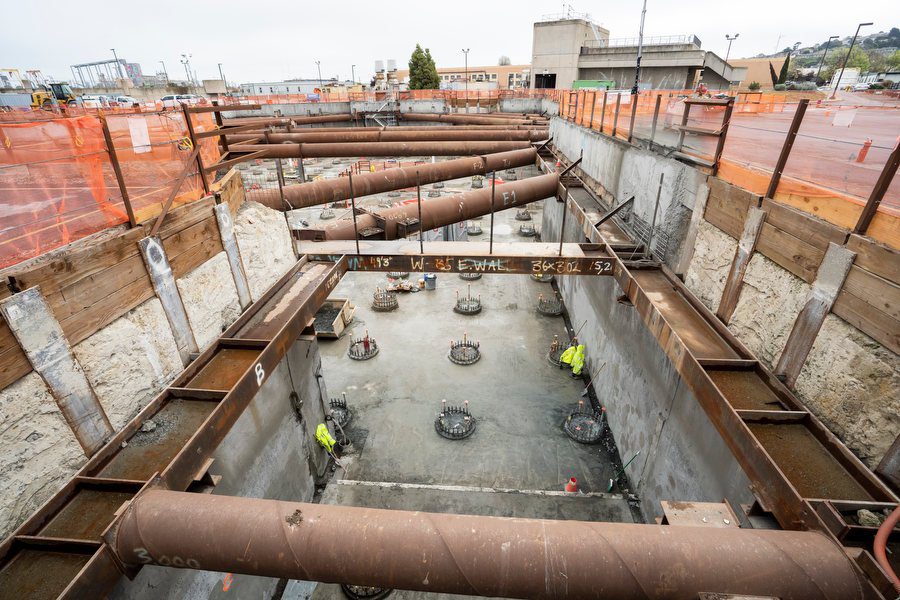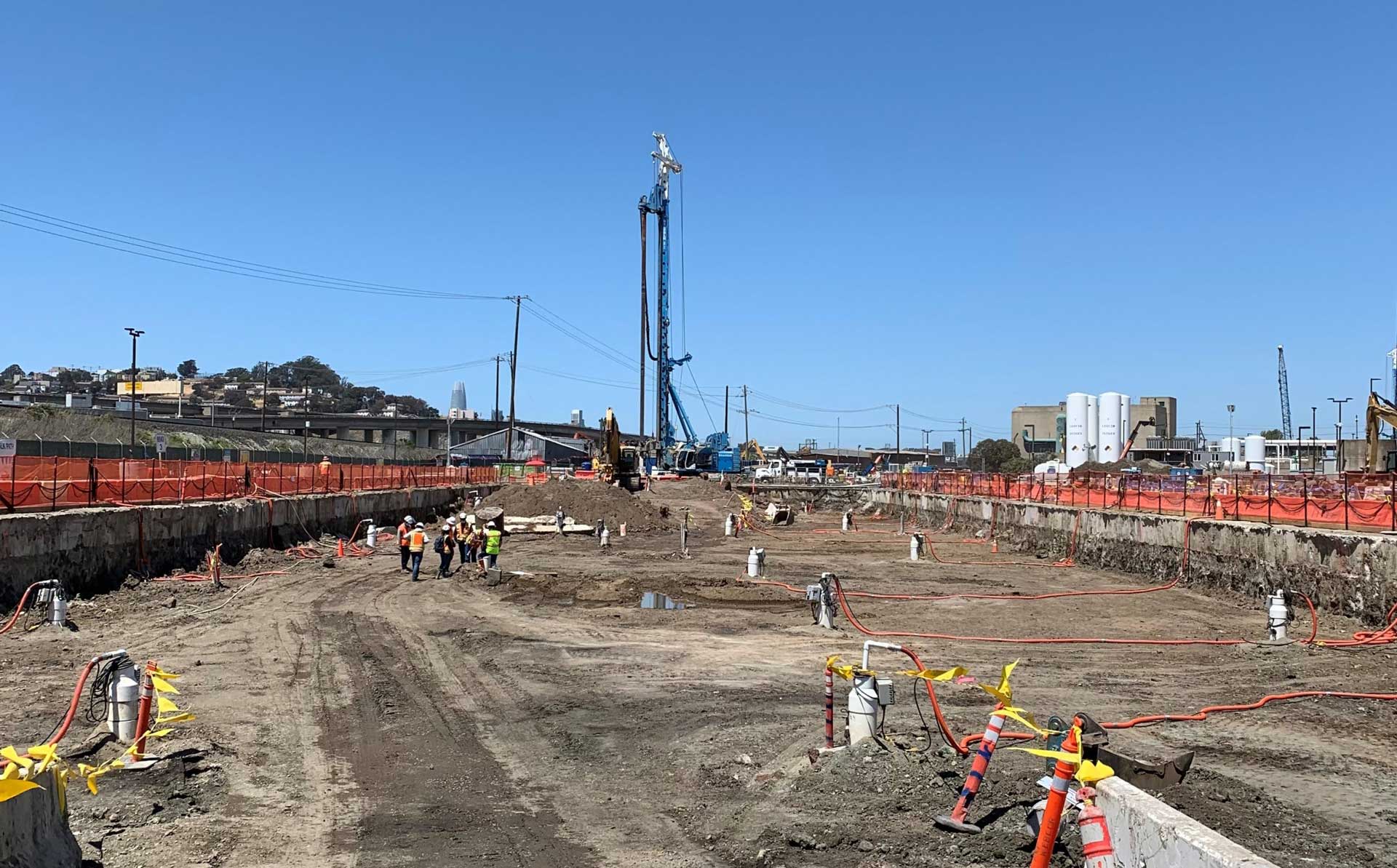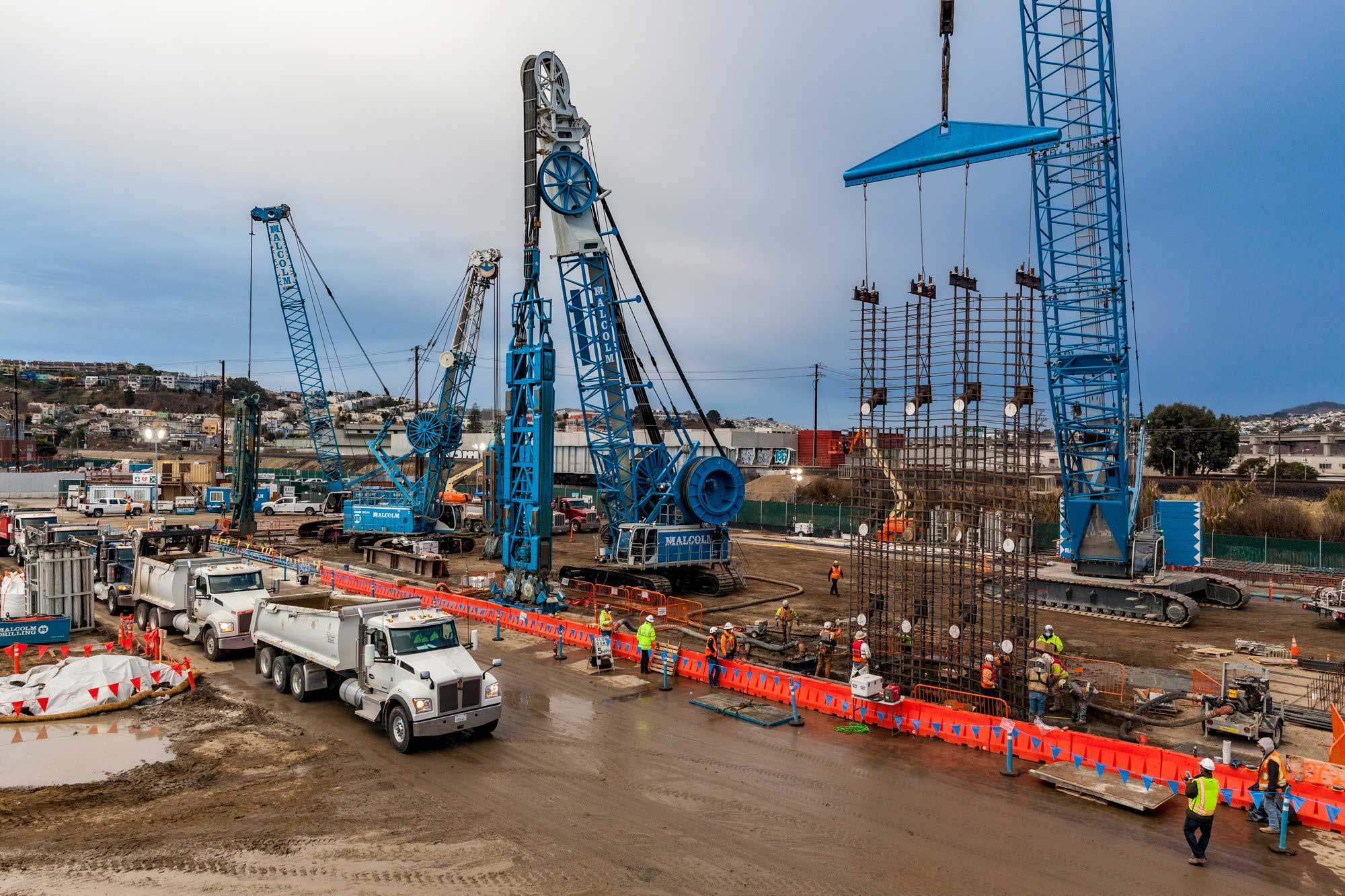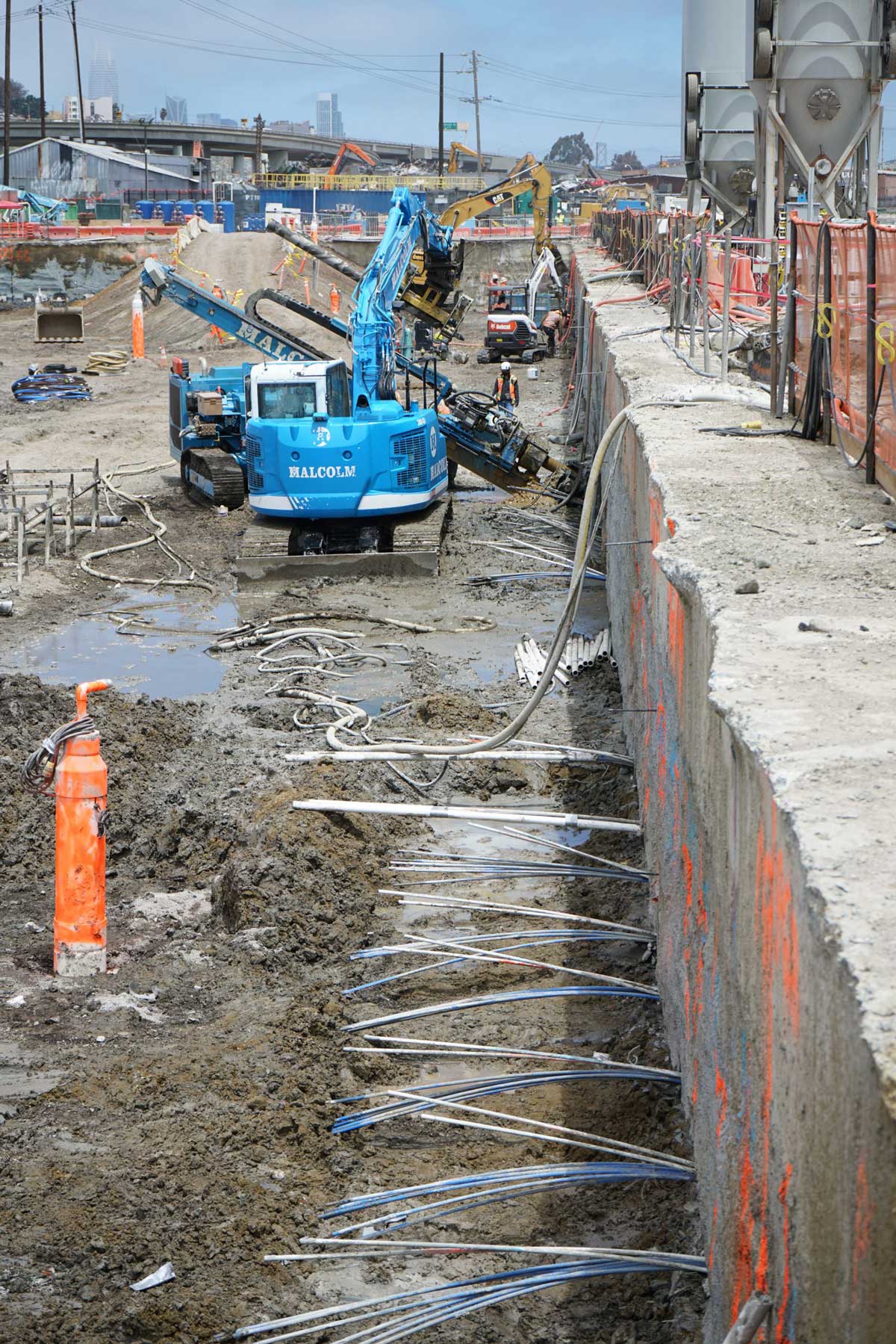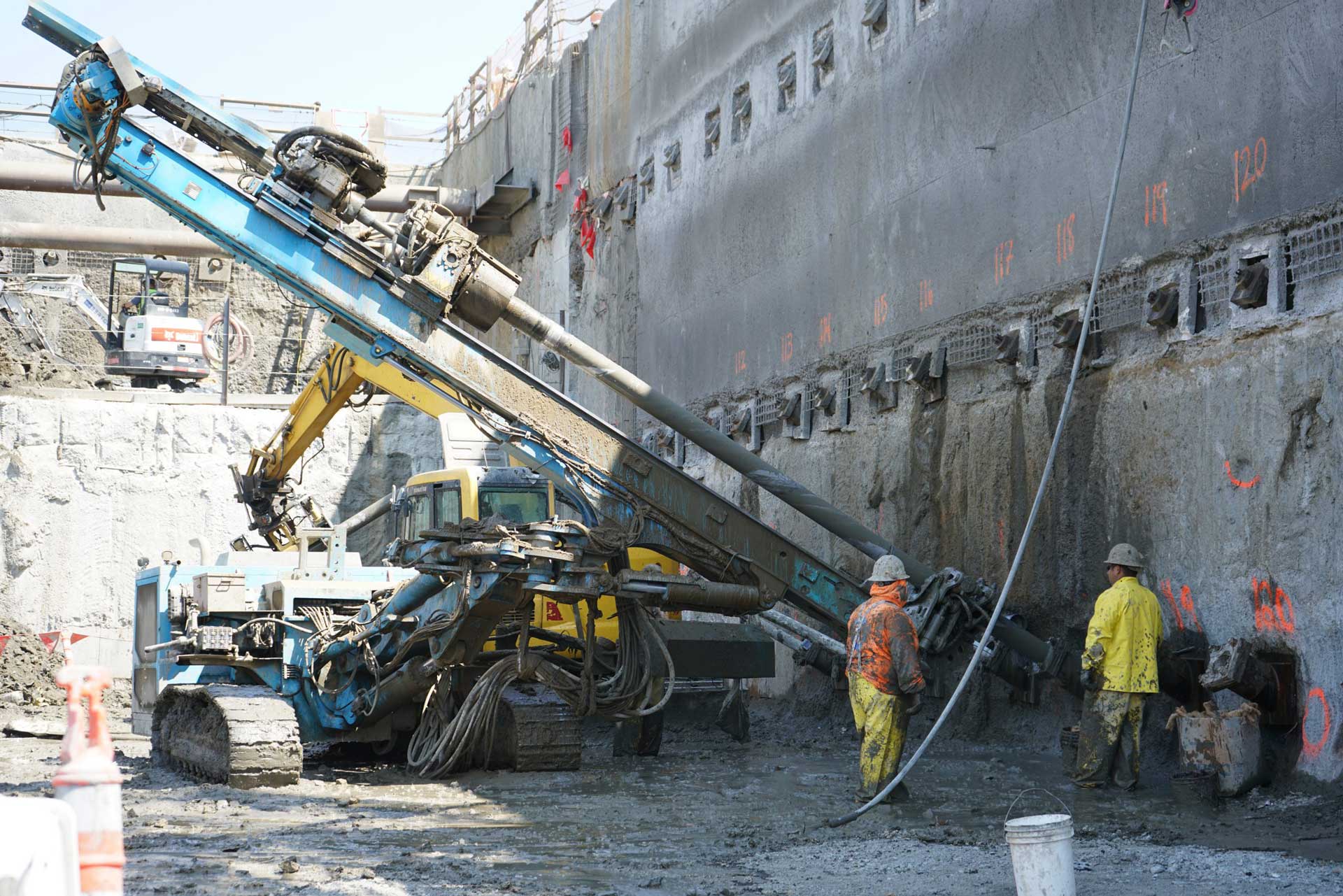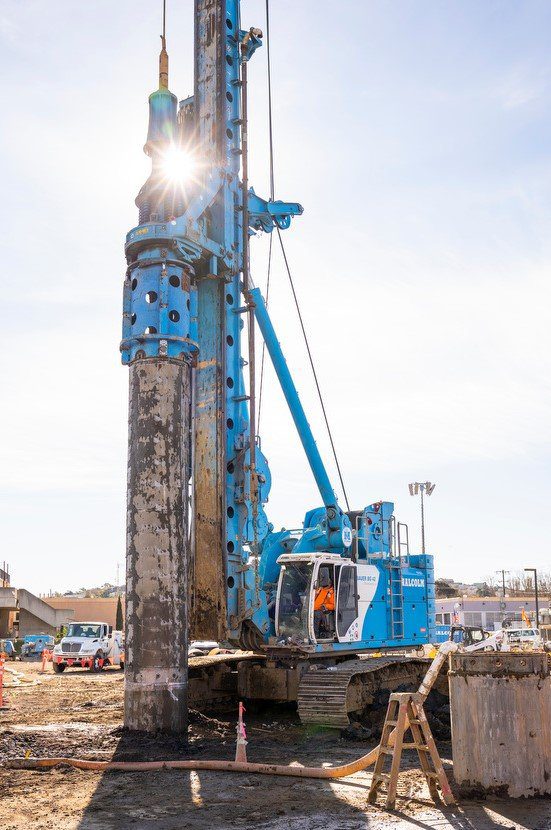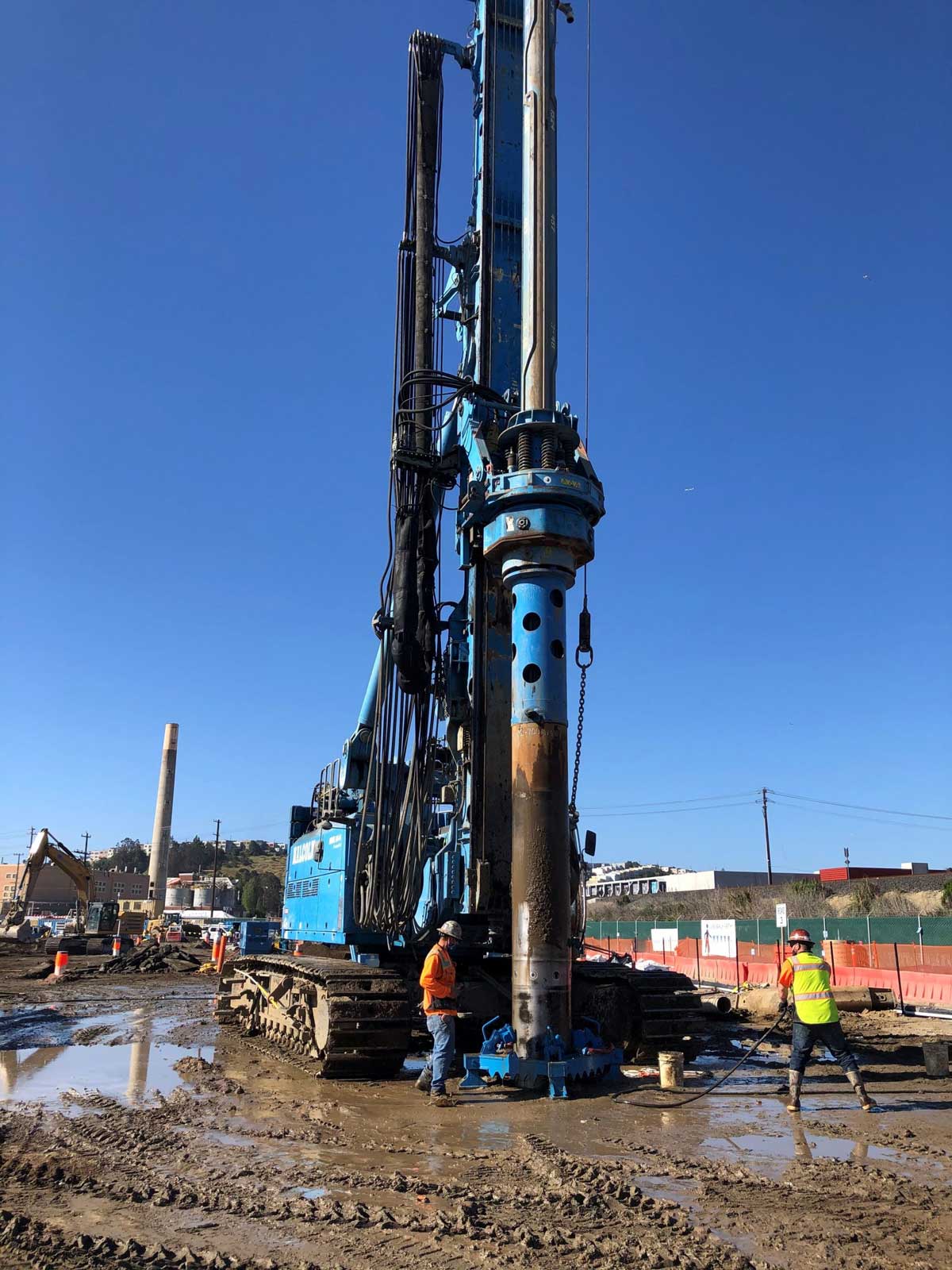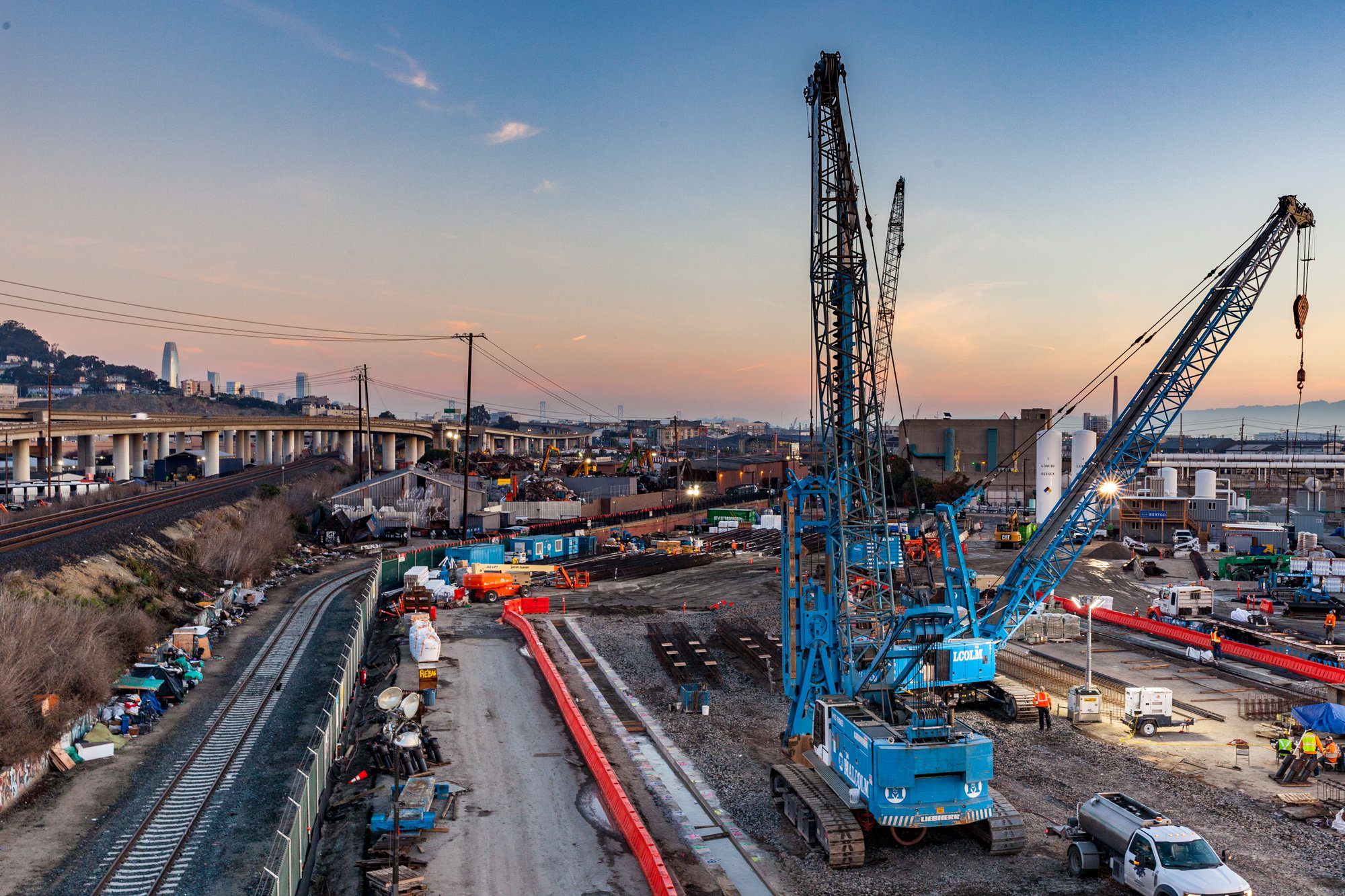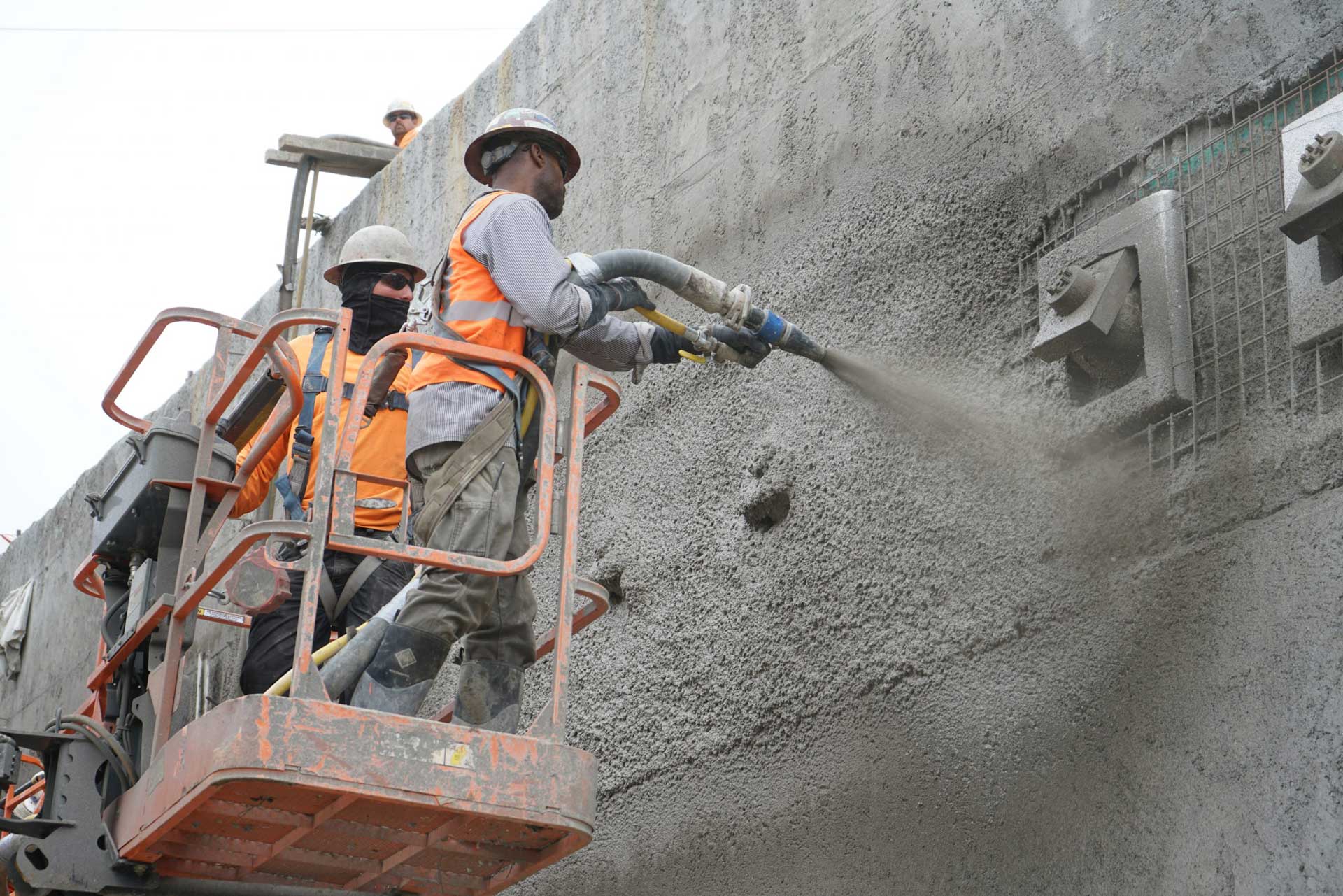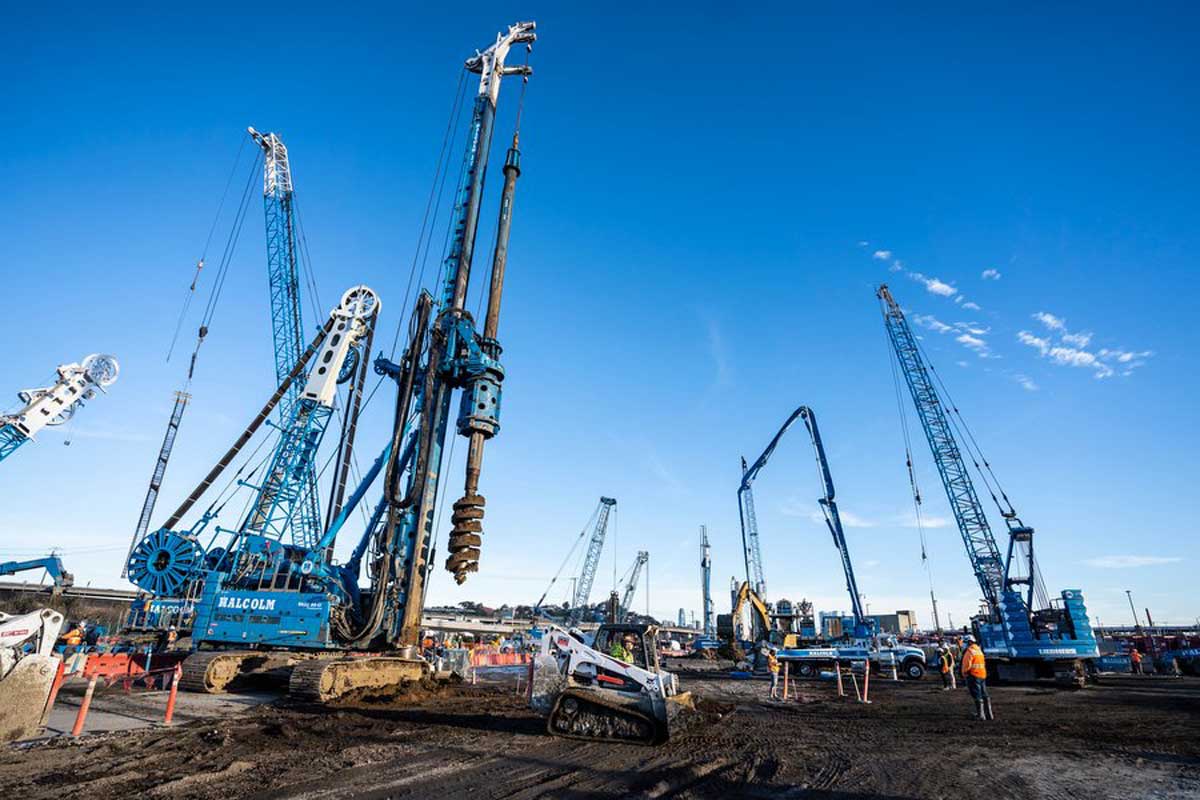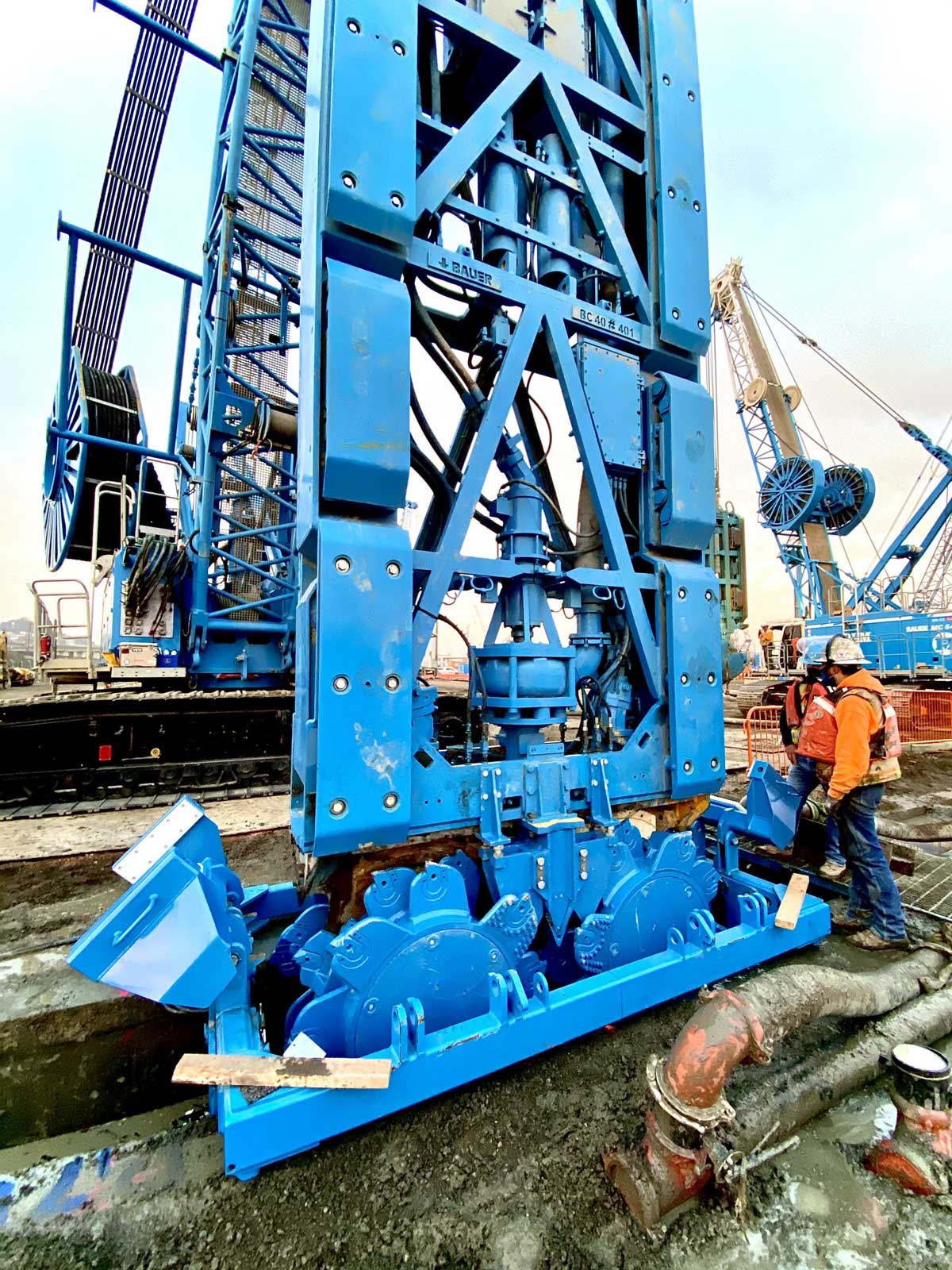SFPUC Biosolids Digester Facilities: Malcolm Drilling’s Successful Partnership
The San Francisco Public Utilities Commission (SFPUC) is a city department that provides drinking water and wastewater services to San Francisco, as well as green hydroelectric and solar power to San Francisco municipal departments.
SFPUC decided early in the process to use an alternate delivery method to harness the expertise of the entire construction industry by engaging Trade Core partners at an early stage in the design-build process. Malcolm Drilling was chosen as the Foundation Trade Core partner after an intense pre-qualification process.
Malcolm Drilling was involved in the pre-construction and construction phases during the design and construction of all deep foundations and Support of Excavation (SOE) for various structures of the Biosolids Digester Facilities Project for the SFPUC Sewer System Improvement Program. Malcolm, working as a trade core partner, developing the design, and meeting the SFPUC budget and construction schedule from an early stage, proved to be a remarkable success for the project.
The foundation and site dewatering package included various deep foundations and SOE techniques, such as Cased Drilled Shafts, Continuous Flight Auger (CFA) Piles, Diaphragm Walls (D-walls), Tie-Downs (Micropiles), Tie-Backs, Bracing, Mass Excavation, Earthwork and Asphalt, Shotcrete, Demolition, and Dewatering. Coordinating the various scopes of work that Malcolm self-performs was another challenge for us. Working closely together with the project’s Construction Manager/General Contractor (a joint venture of Webcor and MWH Constructors) and our main subcontractor, Bertco Inc., as well as two concrete suppliers (Central and Cemex) in a true partnership, was the key to the successful delivery of this massive project.
Malcolm’s expertise in various deep foundation methods helped the designer optimize the use of Continuous Flight Auger Piles (CFA piles) instead of the traditional Cased Drilled Shafts. On this project, Malcolm installed over 140 48-inch diameter Continuous Flight Auger Piles (CFA piles) up to 80 feet deep and 200 36-inch diameter CFA piles up to 70 feet deep, bringing considerable schedule and cost savings to the project. Where the future structure was below grade and CFA piles were not a viable option, Malcolm installed over 210 48-inch diameter drilled shafts up to 100 feet deep, utilizing temporary steel casings to stabilize the weak bay mud soils during drilling. From their highly specialized fleet of equipment, Malcolm utilized several of their Bauer drilling rigs, Leffer oscillators, Putzmeister boom pumps, and Liebherr cranes to complete this work.
As a result of the proximity of the active railroad lines, the 200,000 square feet support of excavation (SOE) wall for building 610 had to also act as a cut-off wall reaching a depth of 160 feet to key into the low permeable old bay clay layer. Malcolm chose a 36-inch-wide structural diaphragm wall, which was laterally supported by tie-backs and corner bracing. Reinforcement was terminated at about 75 feet, tie-back sleeves and bracing embed plates were installed within the diaphragm wall reinforcement.
For the excavation of each diaphragm wall panel, Malcolm utilized several Bauer BC40/BC48 cutters mounted on Bauer MC96 cranes, mechanical grabs, and hydraulic grabs. One Liebherr LR1300 and one Bauer MC96 service crane were utilized to support the rebar cage installation and tremie concrete operation. The diaphragm wall (D-wall) achieved the required water cut-off and kept the maximum deflection and settlement within the tight project requirements.
The support of excavation (SOE) wall for building 610 included over six hundred tie-backs with lengths of up to 80 feet. All tie-backs were installed at 5 feet on center and had design loads of up to 245 kips. They were installed at 30-degree angles with sufficient unbonded length to create a bond zone in the competent upper layers of sediments that exist beneath the young bay mud. The tie-back strands varied from five to ten strands across the entire excavation. The tie-backs were installed through pipe blockouts that were pre-installed within the D-Wall rebar cages.
Water treatment and dewatering were required for two deep building excavations as part of this project. However, the final designs of the Support of Excavation (SOE) walls and the required dewatering scheme were developed during the pre-construction phase. Malcolm performed an early dewatering pump test program to help guide the design of the Support of Excavation (SOE) system and its potential effects on the two nearby active railroad tracks. Due to contaminated soil conditions in some parts of the excavation, Malcolm had to obtain a National Pollutant Discharge Elimination System (NPDES) permit to allow the treated, pumped water to be discharged back to the San Francisco Bay. In total, Malcolm designed and installed 50 dewatering wells targeting three different aquifer zones (shallow, intermediate, and deep) so mass excavation could safely occur in the dry without the risk of bottom heave. Malcolm also installed twelve observation wells to monitor groundwater levels outside the excavation. Malcolm partnered with Clear Creek Systems to provide the water treatment solution as well as WSP to help provide water sampling, testing, and compliance with the NPDES permit.
